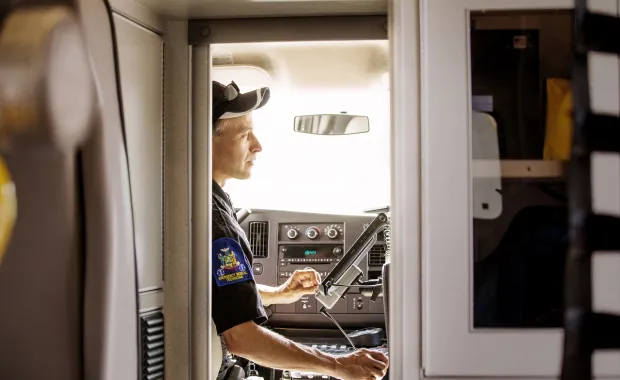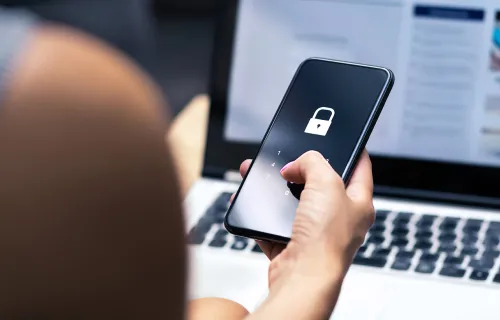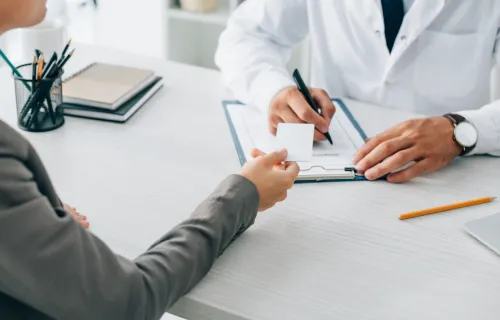Editor’s note: The following is a glimpse at the art of the possible with a particular focus less on the enabling technology but more on the impact of technology on people.
First on the scene
Five minutes after Eric[1], an EMT, started his first shift, he received an emergency call - a car accident with several victims involved. When Eric’s ambulance arrived at the scene, he ran to his first patient, who was severely injured and seemed disoriented. Eric immediately assessed the patient for injuries but soon found himself with a dilemma: not only was the patient disoriented, but he also had no wallet, cellphone or any other device/document that can be used to identify him or know his medical history. Eric tried to ask him if he had any medical conditions or takes any medication he needed to be aware of. The confused patient just answered: “I don’t know.”
At that moment, Eric decided to use the unit’s portable biometric recognition system – a tool that is based on innovative technologies, including blockchain, to unlock the person’s digital identity and provide access to patient medical records in a secure way, facilitating the necessary health information for prompt treatment. This could have been a typical John Doe case, but thanks to this technology, John Doe was quickly identified as John Hagen, who had a complicated medical condition. Utilizing the tool’s patient identification capabilities allowed Eric to save vital time by quickly identifying the patient, ultimately saving his life.
Leveraging digital to access medical records
We all know how important it is to have access to patient's medical records before deciding on a course of treatment. And we likely all know someone who would benefit from having this technology at hand.
It is estimated that more than 50 million people in the United States have allergies and are at risk of suffering from potentially dangerous allergic reactions according to the American College of Allergy, Asthma and Immunology. In addition, nearly half of all Americans suffer from at least one chronic disease, and the number is growing.
The technology we described in Eric’s scenario is not only useful for people with allergies or chronic conditions, it could also be helpful for a person that does not speak the native language, or a patient with dementia on a routine medical check-up. Such technologies allow an authorized user access to a patient’s records instantly, improving their chances of receiving proper emergency care.
At present, CGI has many subject matter and technology experts who are delivering these kinds of solutions for clients. From supply chain traceability, to renewable energy trading, to child welfare payment processing platforms, CGI’s knowledge and experience in technology and solutions, such as blockchain, ensure rapid definition, documentation, understanding and delivery. Naturally, applying this kind of technology within the health ecosystem is a step in the right direction.
Building a data-sharing ecosystem
CGI’s is working with healthcare professionals to break down information silos by building a data-sharing ecosystem based on four key principles: trust, consensus, ownership and consortium. These principles work to establish trust in the data and encourage sharing between data users and providers. This will lead to a single source of truth for all medical records. Imagine a distributed network with no single owner of the data. Transferring medical records from your primary care physician to another is more often than not a painful process but solutions for data sharing are available.
While working on this goal, we are positively impacting the way patient care is provided, benefiting everyone that works in the health industry but, most importantly, to patients like John Hagen.
Using digital beyond emergency response
Remember the scenario with John and Eric? Using available information about John, Eric found a way to stabilize his condition, and realized he needed more specialized medical attention. For that reason, John was rushed to a nearby hospital with available specialists ready to administer necessary treatment.
Harnessing the combined power of technology and an understanding of clinical workflow, this access to medical information and related personal history has the potential to share health data more efficiently and securely, improving coordination of patient care. That’s exactly what Eric did. While his partner drove the ambulance, Eric was busy sending all of John’s health history to the hospital. So, when they arrived, the medical staff was already aware of the case and awaiting John’s arrival. This sped up the process and helped the medical staff treat John in the most effective way while ensuring his personal medical records remained secure.
With the comfort of knowing his patient was in good hands, Eric set off to respond to the next emergency call. As always, he has the portable biometric system close to him. He does not know what kind of challenge his next call will bring, but whatever the situation, he is confident that there are not going to be any John or Jane Does on the scene. At least, not on his watch…and as long as innovators such as CGI continue the work to make these solutions a reality.
Learn more about CGI innovation in Health and Life Sciences
[1] The names used in this blog are fictitious, but represent potential and actual applications of blockchain and other digital technologies.





